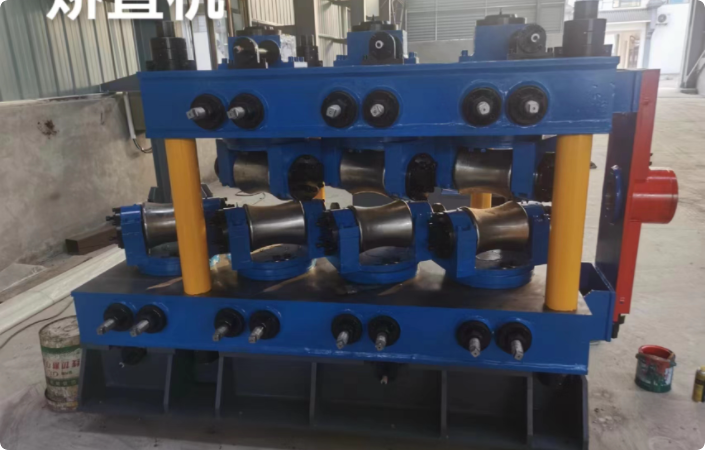Connection Pipe Production Equipment for Efficient Manufacturing Processes
The Evolution of Connection Pipe Making Machines
In the ever-evolving world of manufacturing, the need for efficient and scalable production processes has never been more critical. Among the various innovations that have emerged to meet these demands, connection pipe making machines stand out as a pivotal development. These machines are designed to produce pipes that connect different systems—be it for plumbing, oil and gas, or various industrial applications. This article delves into the significance of connection pipe making machines, their technology, and their impact on several industries.
Understanding Connection Pipes
Connection pipes are essential components utilized in a myriad of applications ranging from residential plumbing systems to complex industrial frameworks. These pipes are responsible for transporting liquids and gases, ensuring the smooth functioning of various systems. Given their widespread use, the demand for high-quality connection pipes has surged, driving innovations in manufacturing processes.
The Role of Connection Pipe Making Machines
Connection pipe making machines have significantly transformed the way pipes are manufactured. Traditionally, pipe production was a labor-intensive task requiring skilled workers and substantial time. Today, with the advent of advanced machinery, manufacturers can produce pipes at a much higher rate and with improved accuracy.
These machines utilize various technologies, including extrusion, molding, and welding, to create pipes in diverse sizes and materials. The automation integrated into these processes not only boosts productivity but also minimizes human error, ensuring consistent quality across batches.
Types of Connection Pipe Making Machines
The market comprises several types of connection pipe making machines, each tailored for specific types of pipes and materials. Here are some of the most common types
1. Extrusion Machines These machines are primarily used for producing pipes from thermoplastics. The process involves melting raw plastic and forcing it through a die to create the desired pipe shape. This method is ideal for producing long lengths of uniform-sized pipes efficiently.
2. Molding Machines Used for creating pipes from materials like PVC, these machines employ a technique where heated material is injected into a mold. This process allows for intricate designs and a variety of shapes, accommodating different applications.
3. Welding Machines For metal connection pipes, welding machines are crucial. They fuse metal parts together using heat, ensuring robust and durable connections. These machines are essential in industries where pipes need to withstand high pressure and temperature.
connection pipe making machine

4. Bending and Shaping Machines These machines are utilized to create custom configurations and angles in pipes. Their flexibility is vital in industries where standard straight pipes cannot suffice due to spatial constraints.
Advantages of Modern Connection Pipe Making Machines
The modernization of connection pipe making machines brings numerous advantages
- Increased Efficiency Automation and advanced technologies enable faster production rates, meeting the high demand for pipes in various sectors.
- Cost-Effectiveness By reducing labor costs and minimizing waste through precise manufacturing processes, these machines help companies optimize their budgets.
- Improved Quality Control With integrated monitoring systems, manufacturers can maintain strict quality standards, leading to increased customer satisfaction and reduced returns or failures in the field.
- Customization Capabilities As industries evolve, there's a growing demand for custom pipe solutions. Modern machines can easily adapt to produce different sizes and shapes, catering to specific project requirements.
The Future of Connection Pipe Making Machines
Looking ahead, the future of connection pipe making machines seems promising. With ongoing advancements in technology, including the integration of artificial intelligence and IoT (Internet of Things), manufacturers can expect even greater efficiency and productivity. These innovations will enable real-time monitoring of the manufacturing process, predictive maintenance, and smart production scheduling.
Moreover, as sustainability becomes a priority in manufacturing, there’s a growing emphasis on eco-friendly materials and processes. Connection pipe making machines are likely to evolve to accommodate this shift, utilizing alternative materials and energy-efficient practices.
Conclusion
Connection pipe making machines are a cornerstone of modern manufacturing, significantly enhancing the production of essential infrastructure components. As technology continues to advance, these machines will play an even more pivotal role in shaping the future of various industries, ensuring that the world’s systems operate efficiently and reliably. The integration of innovation, efficiency, and sustainability will undoubtedly lead to a bright horizon for the pipe-making industry.
-
High Frequency Straight Seam Welded Pipe Production Line-BzZhou Xinghua Machinery Equipment Manufacturing Co., LTD.|line pipe steel&welded gas pipeNewsJul.30,2025
-
High Frequency Straight Seam Welded Pipe Production Line-BzZhou Xinghua Machinery Equipment Manufacturing Co., LTD.|High Precision&Automated SolutionsNewsJul.30,2025
-
High Frequency Straight Seam Welded Pipe Production Line - BzZhou Xinghua Machinery Equipment Manufacturing Co., Ltd.NewsJul.30,2025
-
High Frequency Straight Seam Welded Pipe Production Line-BzZhou Xinghua Machinery Equipment Manufacturing Co., LTD.|Precision Welding, High EfficiencyNewsJul.30,2025
-
High Frequency Straight Seam Welded Pipe Production Line|BzZhou Xinghua|Precision Welding&EfficiencyNewsJul.30,2025
-
High Frequency Straight Seam Welded Pipe Production Line - BzZhou Xinghua|Precision Engineering&EfficiencyNewsJul.30,2025


